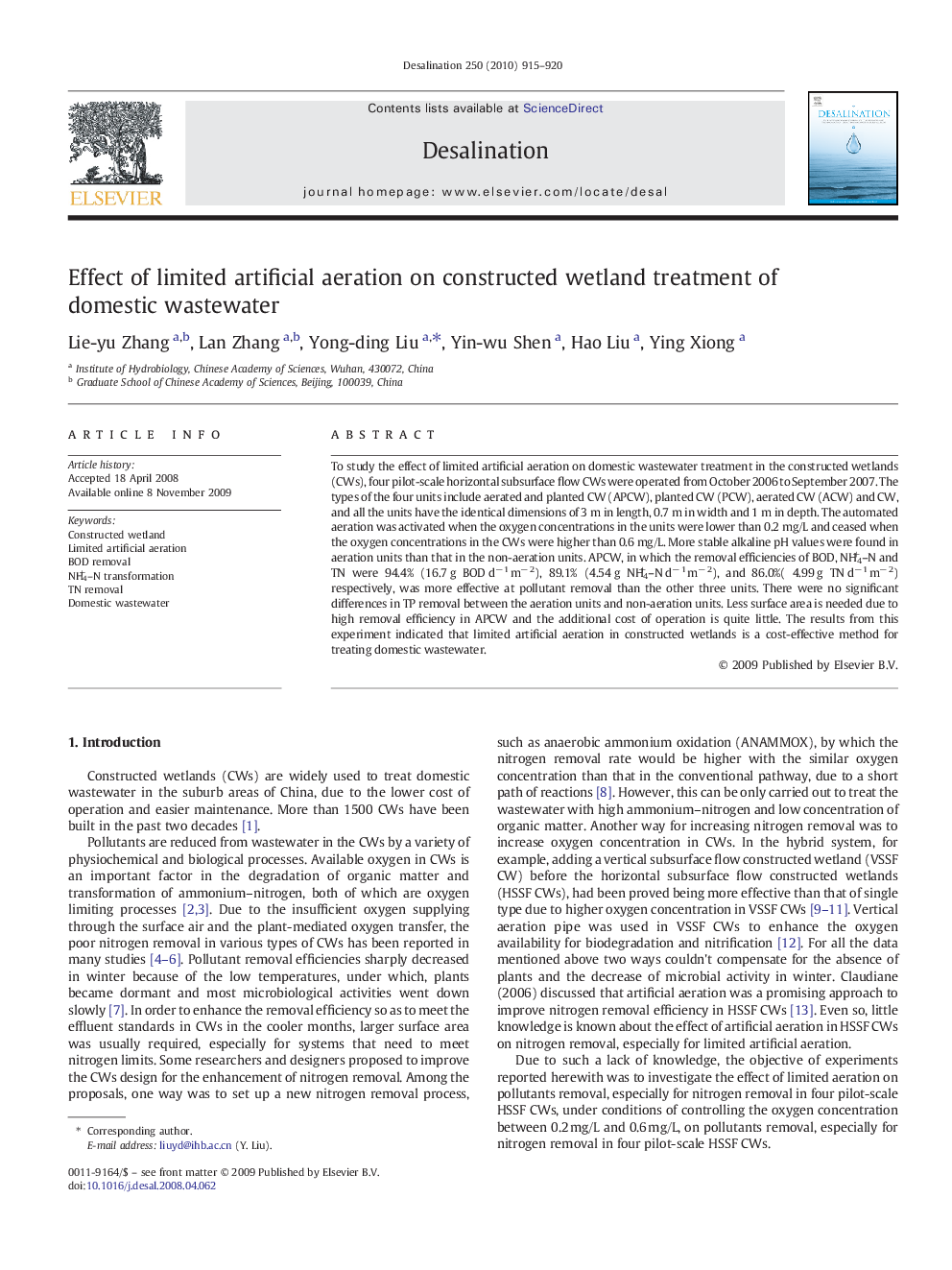| Article ID | Journal | Published Year | Pages | File Type |
|---|---|---|---|---|
| 625974 | Desalination | 2010 | 6 Pages |
To study the effect of limited artificial aeration on domestic wastewater treatment in the constructed wetlands (CWs), four pilot-scale horizontal subsurface flow CWs were operated from October 2006 to September 2007. The types of the four units include aerated and planted CW (APCW), planted CW (PCW), aerated CW (ACW) and CW, and all the units have the identical dimensions of 3 m in length, 0.7 m in width and 1 m in depth. The automated aeration was activated when the oxygen concentrations in the units were lower than 0.2 mg/L and ceased when the oxygen concentrations in the CWs were higher than 0.6 mg/L. More stable alkaline pH values were found in aeration units than that in the non-aeration units. APCW, in which the removal efficiencies of BOD, NH4+–N and TN were 94.4% (16.7 g BOD d− 1 m− 2), 89.1% (4.54 g NH4+–N d− 1 m− 2), and 86.0%( 4.99 g TN d− 1 m− 2) respectively, was more effective at pollutant removal than the other three units. There were no significant differences in TP removal between the aeration units and non-aeration units. Less surface area is needed due to high removal efficiency in APCW and the additional cost of operation is quite little. The results from this experiment indicated that limited artificial aeration in constructed wetlands is a cost-effective method for treating domestic wastewater.
